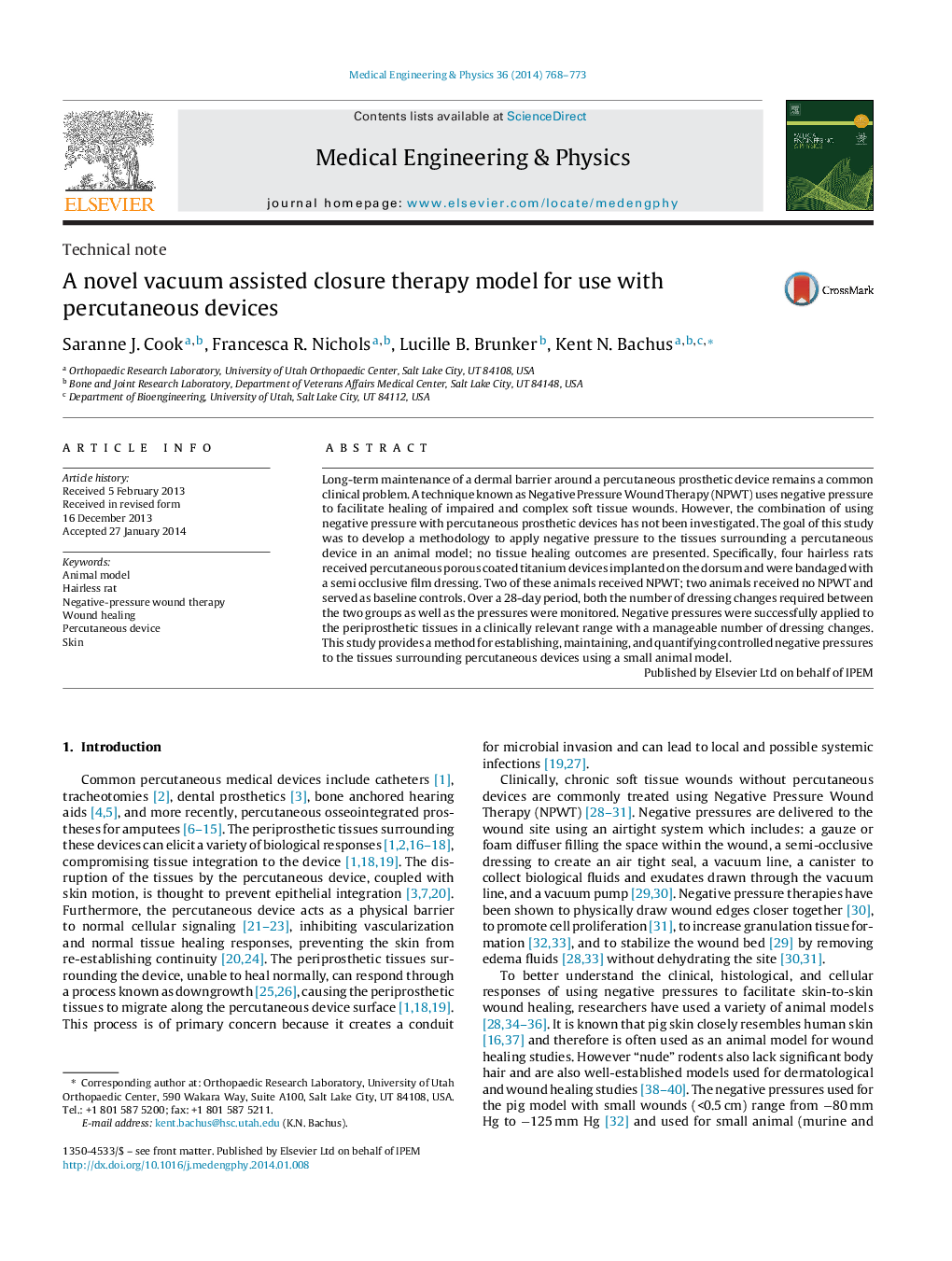| Article ID | Journal | Published Year | Pages | File Type |
|---|---|---|---|---|
| 875910 | Medical Engineering & Physics | 2014 | 6 Pages |
Long-term maintenance of a dermal barrier around a percutaneous prosthetic device remains a common clinical problem. A technique known as Negative Pressure Wound Therapy (NPWT) uses negative pressure to facilitate healing of impaired and complex soft tissue wounds. However, the combination of using negative pressure with percutaneous prosthetic devices has not been investigated. The goal of this study was to develop a methodology to apply negative pressure to the tissues surrounding a percutaneous device in an animal model; no tissue healing outcomes are presented. Specifically, four hairless rats received percutaneous porous coated titanium devices implanted on the dorsum and were bandaged with a semi occlusive film dressing. Two of these animals received NPWT; two animals received no NPWT and served as baseline controls. Over a 28-day period, both the number of dressing changes required between the two groups as well as the pressures were monitored. Negative pressures were successfully applied to the periprosthetic tissues in a clinically relevant range with a manageable number of dressing changes. This study provides a method for establishing, maintaining, and quantifying controlled negative pressures to the tissues surrounding percutaneous devices using a small animal model.
